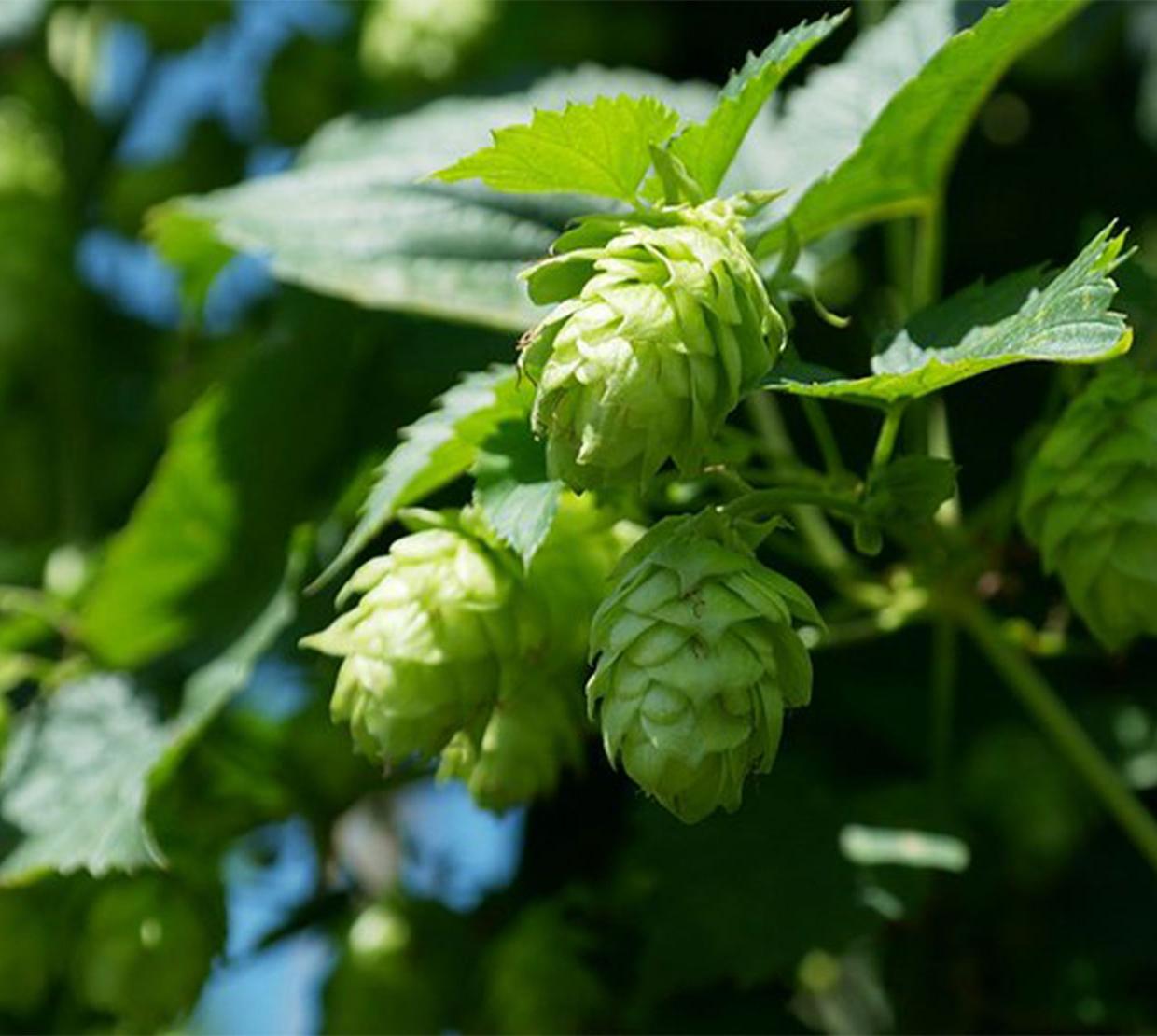The College of Science is pleased to congratulate David Hendrix, associate professor of biochemistry and biophysics, on his recent award of 638K from the United States Department of Agriculture National Institute of Food and Agriculture (USDA NIFA). Entitled “The essence of Cannabaceae: Comparative genomics and metabolics to unravel the complexities of aroma and flavor,” this university-wide collaboration will be funded through 2025.
With this funding, Hendrix hopes to use his expertise in bioinformatics to build on Oregon State University’s decorated history as a leader in hop breeding and increase the viability of hop and hemp products for medical and commercial uses around the world. Both part of the Cannabaceae family, Cannabis sativa (hemp) and Humulus lupulus (hop) generate over one billion dollars in sales in Oregon alone.
In 2021, Hendrix and collaborators became the first to successfully sequence the hop genome with "long read" sequence technology. Unusually large – similar in size to the human genome – and complex to work with, this research revealed similarities between hemp and hop gene structures.
For instance, they identified gene structures in the hop genome that were similar to cannabidolic acid synthase, or CBDAS, which provides the precursor to CBD. While this doesn’t necessarily mean that hops produce CBDA, it does hint at untapped potential for new compounds associated with therapeutic benefit or flavoring benefits.
Now, in collaboration with OSU faculty from horticulture, pharmacy and the USDA, Hendrix hopes to expand this project several steps further. To bridge the knowledge gap between hemp and hop species, they plan to create a database of the comparative genomics and metabolics to uncover the genes and alleles that regulate the synthesis of compounds like terpenes.
With access to 77 hemp genomes sequenced by OregonCBD, and now, five assembled hop genomes, they hope that their work will allow a family-level study of comparative genomics to explore more distant evolutionary relationships and adaptations responsible for their distinct aromas, flavors and production variability.
"We will help breeders develop new varieties of hop and hemp that will meet the needs of emerging markets with an increasingly sophisticated palette for exotic flavors and aromas"
Since the 1930’s, OSU has housed the United States Department of Agriculture’s hop breeding program, which continues to be the only institution in the state with such capacity. Cascade hops were first released commercially by Oregon State in the 1970’s, but dismissed by larger breweries because they were too aromatic.
When craft brewing took off a decade later, everything changed. In 1980, Cascade was used as the finishing hop in Sierra Nevada’s bestselling Pale Ale, considered by many as the beer that launched America’s craft beer revolution. In 2017, Cascade was still listed as the leading hop variety planted in America. And the taste for aromatic, flavorful beers isn’t changing any time soon.
The molecular world of terpenes
The citrusy, ‘grapefruit’ aroma that Cascade hops are known for comes from terpenes. Terpenes are a class of naturally occurring compounds responsible for the great diversity of fragrance, taste and pigment of all plants – but particularly abundant in the Cannabaceae family.
Terpenes are also increasingly of interest to medical researchers. In September 2021, OSU biochemist Adrian Gombart linked xanthohumol, a natural flavonoid found in hops, to improved glucose metabolism – essential for combating obesity, diabetes and heart disease.
Currently, as Hendrix explains, hop breeding is an expensive and time consuming process that may take breeders up to 15-20 years before achieving market acceptance. Costs associated with chemical profiling of new hop lines range from $150-$200 per sample – meaning that breeders are hamstrung in their ability to test the full range of possible flavor profiles. Much of the same problems are true for hemp breeders.
The results of their proposed study could help eliminate many of these obstacles. Instead of expensive chemical testing, breeders would be able to make informed decisions based on genetic markers indicating their terpene profiles.
“By sharing our finding through our proposed web-accessible genomic resource, we will help breeders develop new varieties of hop and hemp that will meet the needs of emerging markets with an increasingly sophisticated palette for exotic flavors and aromas,” Hendrix said.
In a field currently saturated with synthetic chemical flavorings, their proposal holds revolutionary potential. Terpenes are attractive because they naturally provide a wide variety of calorie-free flavors and aromas. Already used to flavor certain teas, ciders and kombucha, Hendrix predicts that hop and hemp extracts may be valuable in even more products.
“By enhancing and harnessing volatile terpenes, which are a large part of these flavors and aromas, our proposed work would inform and improve future generations of foods, beverages and other consumables,” he said.




